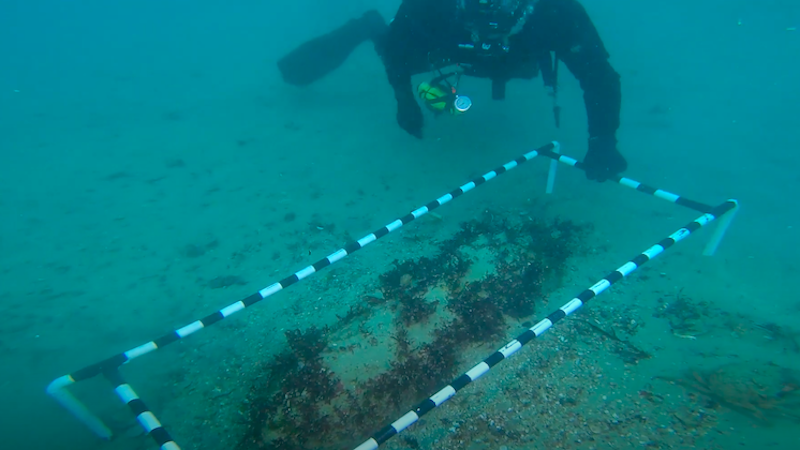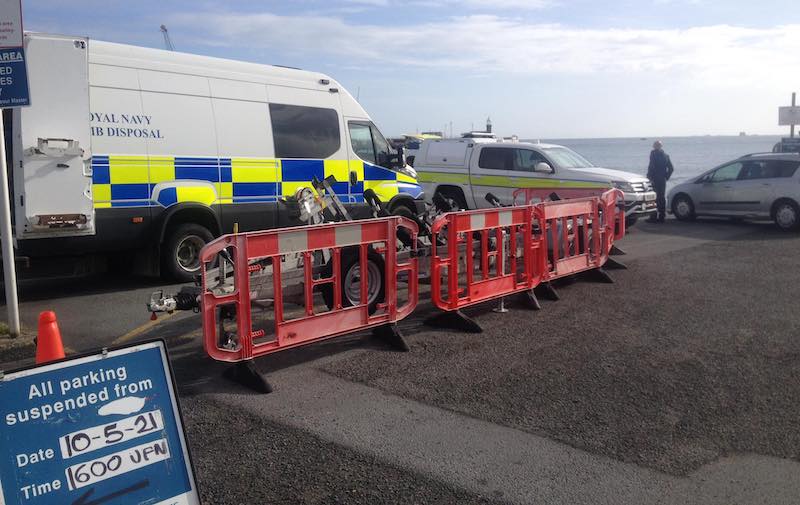


There are undoubtedly more unexploded wartime bombs littered across Guernsey's seabed, the Harbourmaster has said, following the discovery of two British anti-submarine weapons outside the harbour mouth.
Unexploded ordnance discovered by local divers shortly before the island went into lockdown was detonated on Tuesday afternoon in a controlled explosion.
Just hours later, another anti-submarine weapon - potentially dropped by the same British aircraft during World War II - was found only a short distance away.
A specialist Royal Navy dive team has now left Guernsey's shores having detonated the second device.
"The original was an air-dropped anti-submarine bomb known as an AS250 – a British World War II weapon," said Guernsey's Harbourmaster Captain David Barker.
"The one discovered on [Tuesday] evening was the same type. Each of them was about one-metre long and half-a-metre in diameter."
Video: The bomb was discovered just before lockdown and video footage - which can be viewed HERE - uploaded last week by Channel Island Diving.
Having lain undisturbed for 80 years, Captain Barker said the condition of both devices had deteriorated significantly. He said it was plausible that the blast from the first explosion - which caused buildings to shake - had unearthed the second.
"It is also possible that both weapons were dropped by the same aircraft during the war," he added.
"It may have been that they jettisoned them in order to unload weight, or it may be that they were carrying out an attack on a vessel that was in proximity to Guernsey."
What is clear is that both bombs still carried a significant payload - as was demonstrated by the two shuddering blasts.
"The primer and the explosives themselves deteriorate and that can make the bombs inert or it can make them unstable. In this case, both main charges exploded."

Pictured: Each of the weapons was about one-metre long and half-a-metre in diameter.
Captain Barker continued: "You could tell from the reverberations on land and the plume of water at sea that there was a significant amount of explosives in there."
A survey of the seabed around Guernsey for other wartime weapons would be "an enormous task" that would be unlikely to happen.
It means that the onus is on divers and others who encounter suspected ordnance at land or on sea to be vigilant.
"There is no doubt that there are more of these out there, not just at sea but on land," said Captain Barker.
"It could be that they are buried, it could be that they are completely covered in creatures and weeds, which would make them hard to identify.
"If people do come across anything that they are even slightly suspicious about, they should contact police."

Pictured: Of the Royal Navy team, Captain Barker said: "It is to their credit that they were flexible enough to deal with the second device. We are thankful to them for getting here so quickly."
Pictured top: A still from a video filmed and uploaded by Channel Island Diving.
Comments
Comments on this story express the views of the commentator only, not Bailiwick Publishing. We are unable to guarantee the accuracy of any of those comments.